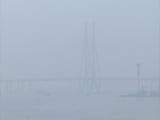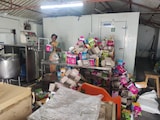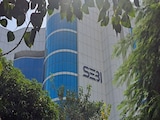- Fordow, Natanz, and Esfahan nuclear sites in Tehran were attacked by the US in overnight strikes
- There has been no increase in off-site radiation levels after the latest attacks: UN nuclear watchdog
- Esfahan site suffered extensive damage, including impacts to underground tunnel entrances
Fordow, Natanz, and Esfahan - the three key nuclear sites in Tehran - were attacked by the US in overnight aerial attacks on Sunday, joining Israel in a war against Iran. Rafael Mariano Grossi, Director General of the International Atomic Energy Agency (IAEA), said there has been no increase in off-site radiation levels after the latest attacks, as informed by the Iranian regulatory authorities. The UN nuclear watchdog called to "work for peace" and offered to mediate.
Esfahan site, which Israel has already struck several times since it began targeting Iran's nuclear facilities on June 13, suffered "extensive additional damage", Director General Grossi confirmed.
The IAEA had previously reported that several buildings at the Esfahan complex were damaged, some of which may have contained nuclear material.
"We have established that entrances to underground tunnels at the site were impacted," the UN nuclear watchdog said in a statement.
The extent of damage to the Fordow uranium enrichment facility - built deep inside a mountain in central Iran - was not immediately possible to assess because of its underground location and the penetrating nature of the bombs used, said the IAEA in its statement.
"It is clear that Fordow was also directly impacted, but the degree of damage inside the uranium enrichment halls can't be determined with certainty," Director General Grossi said.
However, according to several experts, Iran likely moved a stockpile of near weapons-grade highly enriched uranium out of Fordow before the strike early Sunday morning, reported news agency Reuters.
The experts, Reuters spoke to, looked at satellite imagery from Maxar Technologies and noted "unusual activity" at Fordow on Thursday and Friday, before the US attack. A long line of vehicles waiting outside the entrance of the facility is seen in satellite images.
A senior Iranian source told Reuters on Sunday that most of the near weapons-grade 60% highly enriched uranium had been moved to an undisclosed location before the US strike.
Natanz, the third site, which has previously been extensively damaged, was again attacked with ground-penetrating munitions.
The UN watchdog plans to resume verification activities in Iran, including its stockpile of over 400 kg of highly enriched uranium.
"We need to try to go back to the negotiating table as soon as possible. We have to allow the IAEA inspectors to return. The IAEA is ready to play its indispensable role in this process. We have been talking to Iran, we have been talking to the United States. We have to work for peace," Director General Grossi said.















